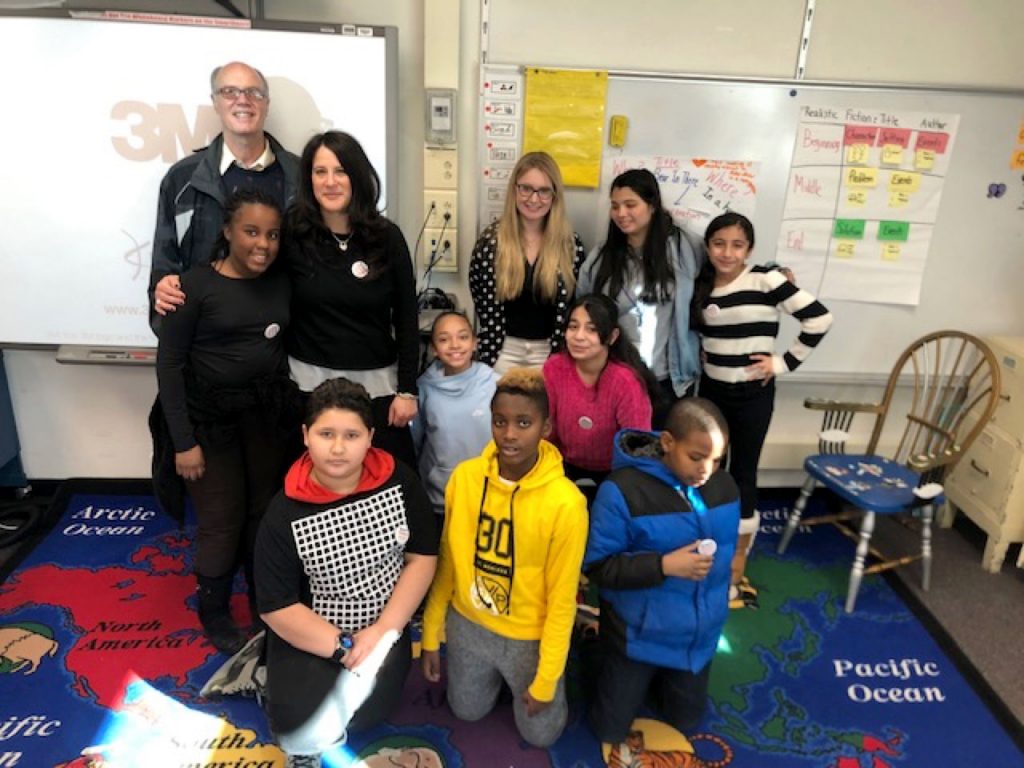By Tim Wolcott
After a circuitous, anxious trek through many hallways and a couple of flights of stairs, I neared the appointed Benjamin Franklin Elementary School classroom. I was glad to see through the open door, sun shining brightly onto small desks arranged in rows. I could hear young voices, but the desks were unoccupied. As I entered the large, rectangular room, the source of the voices became evident at the other end. Three adults were distributed, almost equally, around a circular table where ten, fifth grade students were talking, thinking or watching a teacher discuss something on a whiteboard.

Teach Peace and Justice grant engages students in activism
For a few years, some forty plus years ago, I worked as a research assistant for a number of bright, enthusiastic academic problem-solvers. The energy created when a handful of earnest researchers gather to brainstorm is palpable. As I quickly glanced around the classroom, I immediately felt that “buzz in the air” and knew our financial support for these kids’ research action project was more than warranted.
I held back until a couple of students, and then the adults, looked my way. Without hesitation, the classroom teacher, Brigitte Pittarelli, motioned for me to come join the activity. She briefly explained that the kids were either writing or illustrating their stories, and they were excited about doing this project. After introducing Rose Olsen, the Binghamton University Community Schools coordinator who wrote the project’s Teach Peace & Justice Action Research (B.C.P.A. / teachpeacenow.com) grant application and who is an ongoing resource to this E.L.L. (English Language Learners) class, Brigitte went around the table introducing each child and stating their native country. More were boys than girls; some were demonstrably excited, others reserved and pensive. I heard accents from at least five different languages as the kids returned my friendly greeting. Out of ten children, nine had parents who spoke little to no English. The exception was a child from the U.K. who still qualified to be in Mrs. Pittarelli’s (during lunch and after-school) classroom.
The “culturally responsive” education offered by Ben Franklin E.S. and supported by B.U. is focused on reducing “the lack of awareness of cultural expectations between ELL’s and their peers” while increasing “the understanding of cultural differences that hinder the ELL students’ ability to develop peaceful relationships” at school and beyond. Many ELL students are misidentified and referred to special education classes when what they really need is a more enriching and accessible grade level learning environment.
The “Culturally Responsive Authors Club” had met four times before COVID – 19 kept them home. They had already allied with the fourth grade ELL students to spread out the tasks in creating a book of shared stories about difficult situations they faced at school. I have assured Brigitte and Rose that Broome County Peace Action does not expect to see a final presentation of their project at our May Annual B.O.D. meeting. We understand that they need to meet another four times to collaborate and compile their narratives. If it’s October 2020 before they are ready to show their social action research product, we will be patient, ready to help as needed.
It’s difficult in this scary and constrained time of pandemic to have a hopeful frame of mind, let alone find the personal power to act with compassion and focus. When I begin to succumb to depression and/or apathy, I hold, in my mind’s eye, the scene of Mrs. Pittarelli’s kids joyfully dedicated to the purpose of bullying prevention all the while developing the skills of effective social justice activists.
They support me. We are lucky to support them.

